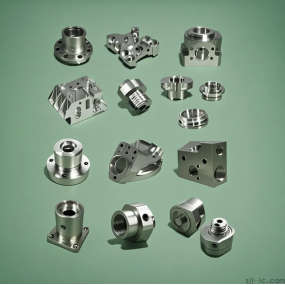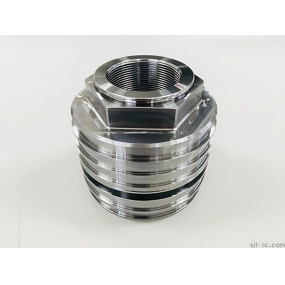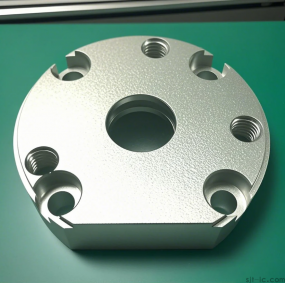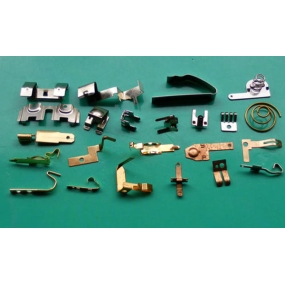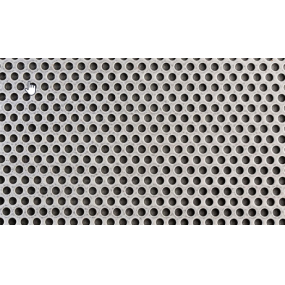Aerospace machining with 5-axis CNC
CNC Machining aerospace parts is messy, and they come in many variations. Therefore, it makes sense to configure many of these parts with a 5-axis milling machine. 5-axis CNC machining involves machine operation using high-precision CNC. This process can move tools and parts on up to 5 axes simultaneously.
Machines can be set up to achieve messy geometries. As the aerospace industry continues to grow, parts can be constantly reconfigured and adjusted after 5-axis CNC machining. Usually, this robust process better handles the technicality and scope of aerospace components. As a result, engineers can milling, drilling or fabricating them to the specifications required for aircraft. In addition, 5-axis machines meet high-performance specifications for aircraft CNC machining.
Materials for numerical control cnc machining of aviation parts
Although the engine or wing of an aircraft is usually immediately thought of when it comes to aerospace production, airplanes are made up of millions of parts. Obviously, not all parts are produced using CNC machining. However, several of these materials are used in aircraft components.
Light metal
Two key characteristics determine the CNC-machined materials used by aerospace companies. These characteristics are strength and weight. Although considered strong, metals such as steel are undesirable for most parts. This is because they are so heavy that aircraft are less fuel efficient (and therefore more expensive).
As a result, the aerospace industry is looking at metals that are strong and lightweight, such as titanium and aluminium alloys, both of which are easy to work with in CNC machining. Titanium, for example, is about 30 per cent stronger and 50 per cent lighter than steel. It also has excellent resistance to heat and corrosion. It is therefore an ideal choice for functional aircraft components and external components.
Aluminum is lighter than titanium, but only about half as strong. However, this highly machinable metal is more cost-effective than titanium. It is also well-suited for a variety of aircraft components.
High performance plastic
Although metal components are more commonly used in the functional construction of aircraft, many of the internal components come from polymer-based materials that are much lighter than metals. They assist in the production of parts such as interior wall panels, ventilation ducts, aircraft doors, wiring ducts, bearings, and more. They are aerospace-grade plastics that are lightweight, strong, and compliant with aerospace flame retardant regulations.
Five-axis CNC machining makes strong, simple, and messy plastic parts for the aerospace industry. The fabrication of these parts involves materials such as PEEK and other high-performance polymers. Similar to machining metals, aerospace machining provides the high precision required for aerospace use of polymers.
conclusion
The aerospace industry is known for its high-quality requirements and professional specifications. The finesse of aircraft use also makes it essential to produce high-quality parts. Aerospace CNC machining provides the solutions required by the profession. Weimat focuses on safety and hazard management and is ready to meet your aerospace manufacturing needs.


 English
English Spanish
Spanish Arabic
Arabic French
French Portuguese
Portuguese Belarusian
Belarusian Japanese
Japanese Russian
Russian Malay
Malay Icelandic
Icelandic Bulgarian
Bulgarian Azerbaijani
Azerbaijani Estonian
Estonian Irish
Irish Polish
Polish Persian
Persian Boolean
Boolean Danish
Danish German
German Filipino
Filipino Finnish
Finnish Dutch
Dutch Galician
Galician Catalan
Catalan Czech
Czech Croatian
Croatian Latin
Latin Latvian
Latvian Romanian
Romanian Maltese
Maltese Macedonian
Macedonian Norwegian
Norwegian Swedish
Swedish Serbian
Serbian Slovak
Slovak Slovenian
Slovenian Swahili
Swahili Thai
Thai Turkish
Turkish Welsh
Welsh Urdu
Urdu Ukrainian
Ukrainian Greek
Greek Hungarian
Hungarian Italian
Italian Yiddish
Yiddish Indonesian
Indonesian Vietnamese
Vietnamese Haitian Creole
Haitian Creole Spanish Basque
Spanish Basque


